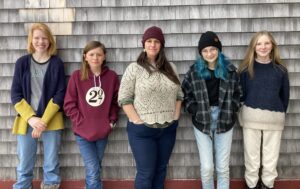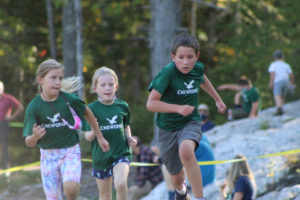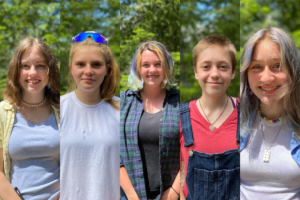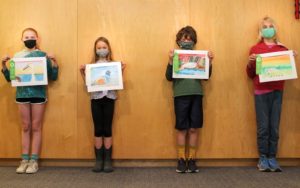“When we’re outside, we feel normal,” says Kat Cassidy, the Head of Elementary & Middle School at Chewonki. “We can spread out and lower our masks. We can see each other’s faces and smiles.”

The outdoor classroom spaces created by the school offer a central rallying point for each class, complete with weather protection, camping chairs, and whiteboards. At the same time, each student is expected to maintain their own backpack of school and personal supplies, allowing teachers to take their classes anywhere on Chewonki’s 400-acre campus.
“You need the Big 5 in your backpack every day,” says Cassidy. “Hat, coat, mittens, boots, and core layers. Plus school supplies, food and water, and especially your field journal.” All students from grades 1-8 make daily natural history observations, filling their journals with “phenology,” detailed descriptions of plant, animal, and natural systems.

“I’ve been teaching place-based education for over 20 years, and all these years I’ve been living and teaching this philosophy, says Cassidy. “But this year feels like we’ve moved to a higher level in terms of embracing what this means and how it impacts what we do each day. We are 100% place-based. The enthusiasm that we’re seeing in our students about being outdoors and learning about the world around them is exactly what we’re aiming for.”
Outdoor schooling presents its own unique challenges to the students and faculty. Hauling fully-equipped backpacks, exposure to the weather, extra physical activity, and COVID-delayed pick-up and drop-off routines have resulted in long days and tired students.

“We’re all tired,” says Cassidy. “But happy and tired. Some of the students say this feels more fun, like camp. Many of these students hadn’t really been engaged with other children in months or immersed in the natural world quite to this extent. At this developmental stage, they desperately need social-emotional learning, a connection to the natural environment, and time with their peers.”
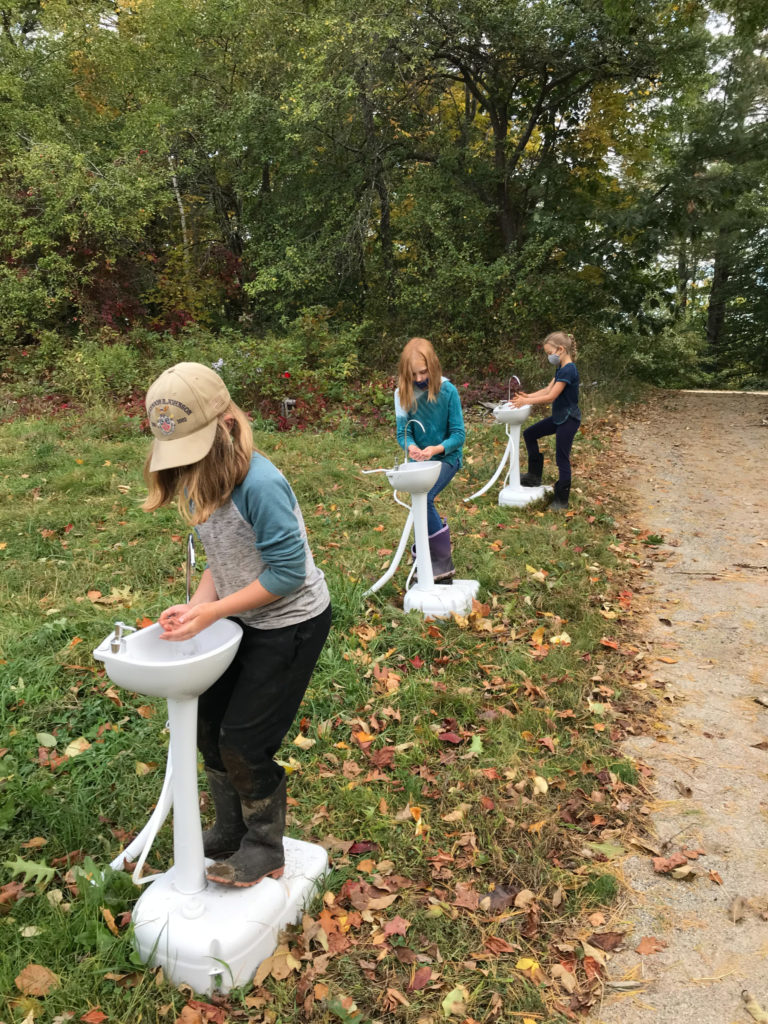
When asked about the long-term impacts of COVID-19 on the students’ education, Cassidy remarked “…as educators, of course we worry. So much of the day is devoted to “the other things” like hygiene practices, or lining up and spacing out before every activity. However, the kids don’t seem to notice this as much as our faculty. The important thing is that we’re here, we’re together, and we’re making it work. Ultimately, we’re still getting in all of the academics and stretching to learn new skills.”

Cassidy also notes a dramatic increase in her student’s “executive function abilities,” the habits and practices of impulse control, self-discipline, and personal organization. “Living and learning this way has shown students the immediate impact of their choices, and it’s helping with their mental flexibility, time-management, and self-resilience,” says Cassidy.
“In the past, it may not have been such a big deal to leave supplies in a pile on the floor, or rely fully on adults to manage decisions about gear, but now students have to take responsibility for their daily experience at school. This will only help them in the long run.”
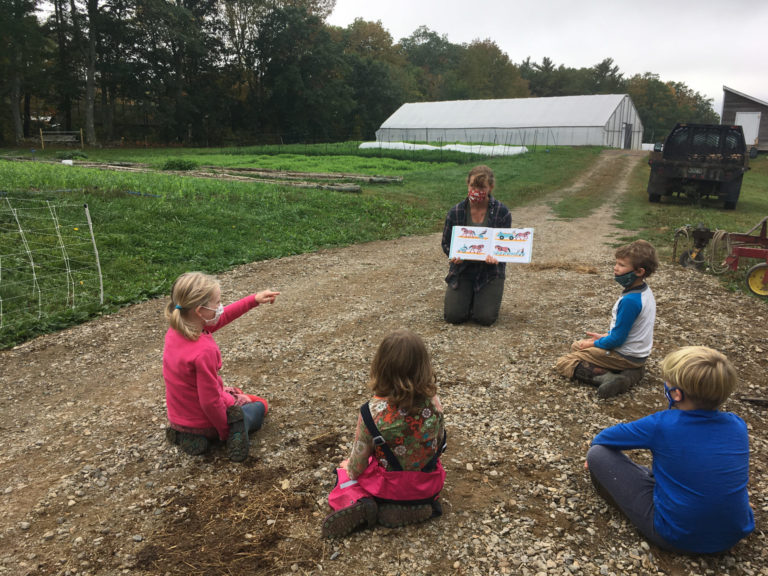
“I love seeing our students tromping around campus, backpacks loaded up, with everything they need to be comfortable, safe, and ready to learn. They’re smiling and excited for whatever is next, tuned into their own bodies, and the world around them,” says Cassidy. “The pandemic is challenging for all of us, but we’re gaining some practices that I’ll be happy to keep when this is all over.”
